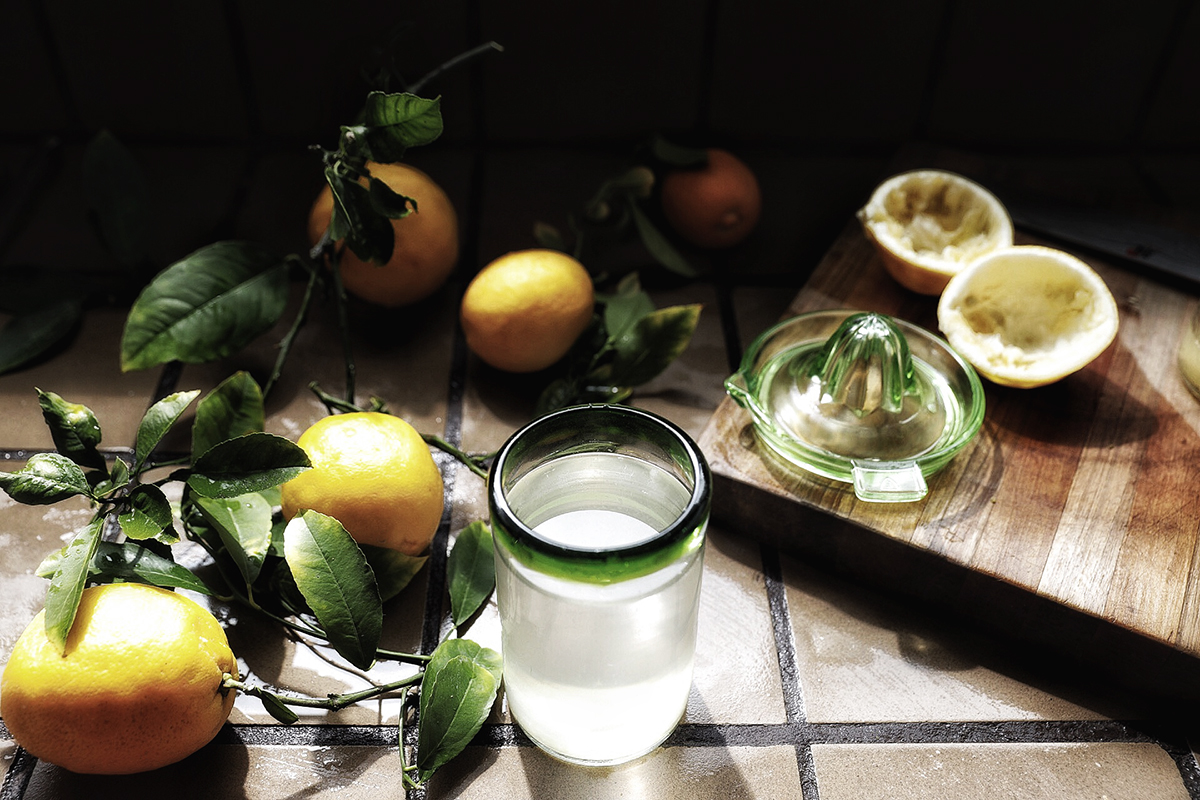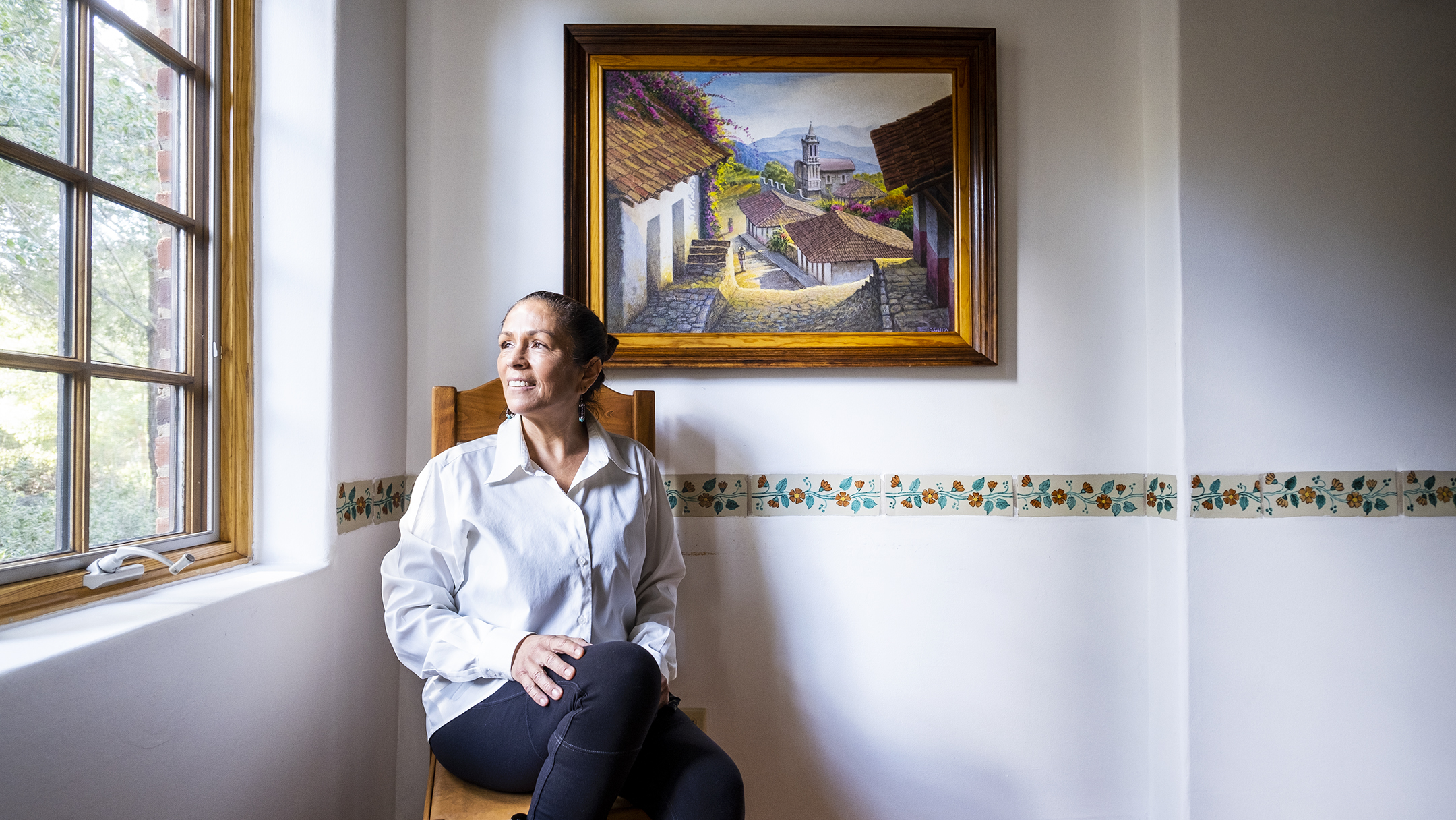Seven Tips To Eating for Healthier Skin

There’s a ton of products out there that will help your skin look and feel amazing. Sometimes it’s not what we put on our skin that can help us but what we eat. Is it possible to eat your way to healthy skin? We asked Lindsay Sherry the founder, and owner of Real Healing Nutrition, Clinical Nutritionist, and Rancho La Puerta Guest Speaker for a handful of tips on consumption to help keep our skin stay hydrated and healthy.
Hydrate
One of the best and most natural things to do for your skin is to consume water. It’s easy to get involved in the day and forget to drink water or avoid drinking it because you don’t want to take a bathroom break. However, drinking the right amount of water is one of the best things you can do for your skin. Lindsay recommends drinking one liter of water a day for every 50 pounds of body weight. So, a 150-pound person should drink three liters of water a day.
Adding antioxidants to your water like lemon, one of the highest antioxidant juices, lime, or an apple cider vinegar will help bring down inflammation and could help cleanse, purge, and brighten the skin. “Of the three, apple cider vinegar is probably the most intense. If you want to go for a home-run or earn extra credit, apple cider vinegar is probably the best,” says Lindsay. “Every client I work with, no matter why they’re coming in, whatever condition, I always have them drinking lemon or lime water in the morning, to help flush their system. But as a side benefit, they also start to report that their skin looks better and is brighter and that their blemishes are diminishing.” She recommends adding a whole lemon or lime per glass of water or a tablespoon of apple cider vinegar. For best results rotate between the three and add them to half your daily water consumption.
Get Rid of Sugar
“The first step in any healing process,” says Lindsay “whether it’s physical, mental, or emotional, is to remove what’s causing the assault. What you feed your body may be as important to your skin as the lotions and serums you apply to it. Sometimes it’s not what you add to your diet. It’s what you take out.” And one the biggest things she would eliminate from most peoples eliminate is sugar. “The first thing that people start to report when going on a sugar detox, and it’s so unexpected, is that their face starts to clear up and look amazing and it’s because sugar is so inflammatory.” Sugar spikes your insulin and causes inflammation to your enzymes and breaks down collagen. This breakdown results in less than healthy plump skin and enhances wrinkles. It can also worsen skin conditions like acne and blemishes. “Even if eating sugar doesn’t give you acne,” says Lindsay, “it can still cause inflammation where you can see your pores are larger and you can see more flaws.”
Stopping sugar doesn’t mean you need to stop eating fruit. Fruits have multiple nutrients, beneficial fibers, and antioxidants. “Stay away from refined sugars and absolutely the artificial sugars,” says Lindsay “Sometimes people make a mistake when they do a sugar-free diet, and they take out the refined sugar and the artificial, which is great. But then they supplement by adding in honey, agave, or maple syrup.” These can still be inflammatory and affect your skin. Instead of adding sweeteners, change the flavor profiles of foods by adding spices like cinnamon or cardamom.
Spices and Herbs
People typically think of the berries when it comes to antioxidants, which counter free radicals and may slow the visual signs of aging. But the most potent antioxidants tend to be in spices. Turmeric, cinnamon, oregano, and cloves, are some of the most potent antioxidant-rich foods. Just adding those spices to your diet is going to be great for enhancing the anti-inflammatory properties and benefits to your skin.
“Oxidation is when an atom or molecule loses an electron and then it makes it unstable,” says Lindsay. “Essentially, when we get too much oxidative stress we’re rusting from the inside out. Some of the top signs of oxidation aren’t just blemishes in your skins, but the loss of energy and fatigue, memory loss or brain fog, muscle and joint pain, wrinkles, sagging skin, graying hair, susceptibility to infections, decreased eyesight, headaches, and sensitivity to noise. Those get called the signs of aging. When we’re young, we churn out antioxidants like it’s our job, but as we age, that process starts to slow considerably. As we age, we need to boost the antioxidants in our body.”
Antioxidants continuously need to be replenished, and berries give you a fresh dose. Spices like turmeric boost your body’s ability to produce antioxidants for a few hours after you consume it.
Omega-3s
Don’t cut these polyunsaturated fats out of your diet. Healthy amounts of Omega-3s decrease inflammation and may reduce the risk of acne and other skin issues. “Omega-3 is an essential fatty acid which cannot be sufficiently produced by the body and needs to be obtained through dietary sources. These fatty acids help to revitalize and rejuvenate the skin and maintain proper skin tone,” says Lindsay. “They also help to keep your skin looking smooth, radiant, soft and flawless.” The needed fatty acids in Omega-3s are natural moisturizers that revitalize dry skin, helping to keep its cells plump and hydrated. A healthy blend of fish and nuts is best for getting a needed daily dose since they each contribute differently.
Cooking Oils and Cooking Temperatures
There’s a lot of competition amongst cooking oils on the market. When choosing which to use there are a couple of things to consider; cooking heat and the presence of polyphenols, the antioxidants, and anti-inflammatories that the oils contribute for the defense of healthy skin and signs of aging. Not all cooking oils are the same.
“Our modern cooking methods tend to be toward very fast, high, high heat,” says Lindsay. “That can break the oil down. Once it starts to smoke, you’ve destroyed the enzymes, destroyed all the good stuff with it.” Olive oil is excellent as a lower temperature cooking oil or as a spritz across salads and vegetables. If you cook over higher heat, then avocado oil is excellent and has vitamin E as well, and that’s also an antioxidant.
Seaweed
Seaweed isn’t just for sushi. It’s also great as a snack on its own, in soup, sprinkled on fish, or tossed in a salad. Not only is it packed with vitamins and minerals, but you also get coveted Omega-3s. “I’ll have people, when they cook soups, or when they cook their rice or beans, I’ll have them actually throw a strip of Kombu into what they’re cooking. And they use it like a bay leaf.” A two-inch strip of Kombu, a dried dark purplish-brown kelp used in Japanese cooking, has vitamin B2 which helps maintain collagen levels which helps with fine lines and wrinkles. It also contains enzymes and amino acids that reduce bloating and gas while aiding digestion to that bowl of beans.
Don’t Ignore Food Intolerance
“A lot of times, I’ll have clients come in, and I’ll ask them, “What do you think that you could do to improve your health?,” asks Lindsay. “And as they start talking to me, they might say, ‘I might be dairy intolerant, but it’s not a big deal.’If you sense or know of an intolerance, not just an allergy, it’s probably best to stop ignoring it and stop consuming that thing.”
As long as you’re continuing to consume foods you’re intolerant to you’re disrupting the healing process. It’s tough for your body to recover and heal if you keep hurting it. You need to give your body a break to breathe and a chance to heal. In an elimination diet, you stop eating the foods commonly known to cause mild reactions from bloating to a rash. An intolerance is a low histamine reaction and can be harder to gauge because the symptoms can manifest over time. It can be digestive responses, like bloating or gas, but it can also be mental fogginess or fatigue or a rash that develops or never goes away. “Fatigue is the number one symptom of food intolerance. When you’re taking in something that your body doesn’t want, it’s the normal pathways of elimination. Your body’s going to try to push that through the skin. So that’s where I’ll see more people get these rashes: eczema, psoriasis … Or they might get hot spots, or acne and things like that. Your body’s trying to eliminate something that’s not working for it.”
See the Nutritionist teaching at Rancho La Puerta.


